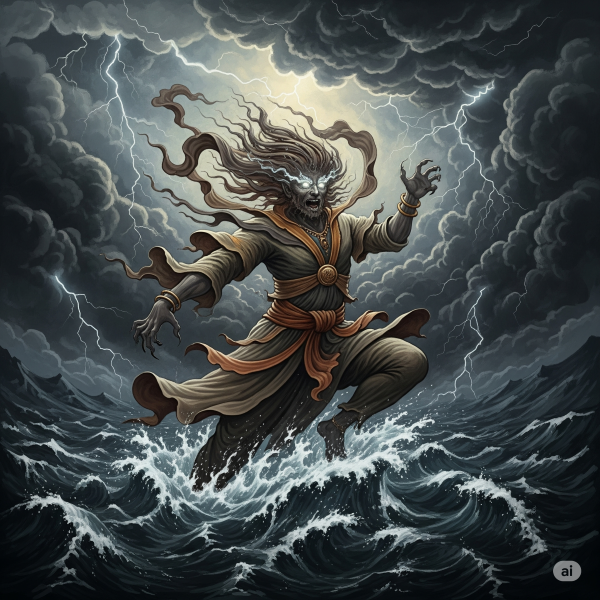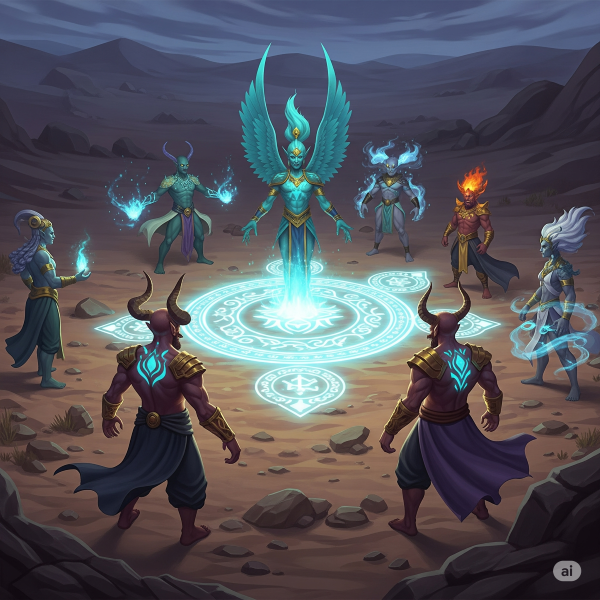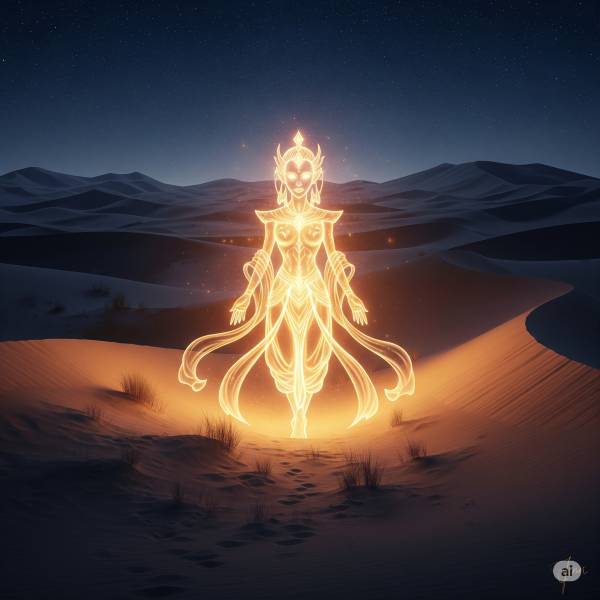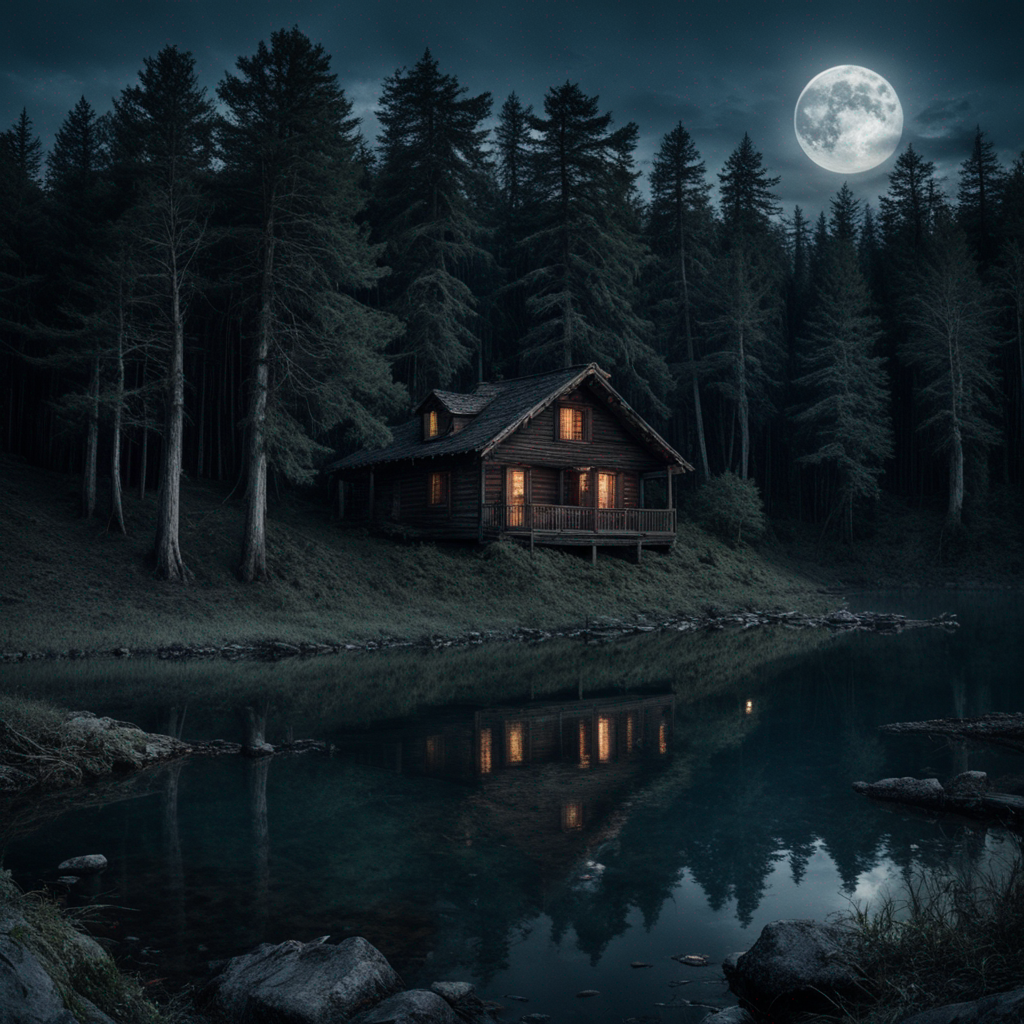Djinn, or Jinn, are mysterious supernatural beings rooted deeply in Arab folklore and Islamic tradition. Often misunderstood in Western narratives as mere “genies in lamps,” Djinn are far more complex and powerful.
Their legends span centuries, influencing cultures, beliefs, and even modern media. This blog post dives into the origins, types, abilities, and cultural significance of Djinn, unraveling their role in both ancient lore and contemporary thought.
Origins and History of Djinn

The concept of Djinn predates Islam, originating in pre-Islamic Arab culture where they were considered spirits of nature inhabiting deserts, ruins, and wilderness.
With the advent of Islam, Djinn were incorporated into Islamic theology as beings created from “smokeless fire” (Quran 55:15), distinct from humans (made of clay) and angels (made of light).
They possess free will, making them capable of both good and evil, and are accountable for their actions in the afterlife. This theological position places Djinn in a unique category of metaphysical entities within Islamic cosmology.
Types of Djinn
Not all Djinn are alike. Over centuries, folklore and religious texts have categorized them into various types:
- Marid: Known for their strength and often depicted as proud and rebellious. These are the most powerful type of Djinn.
- Ifrit: Typically malevolent, associated with fire and the underworld. They are cunning, strong, and dangerous.
- Jann: Considered the weakest and most benevolent of the Djinn. They are desert dwellers and often assist humans.
- Shaitan: Evil Djinn who rebel against divine will, often synonymous with devils or demons.
Each type has distinct characteristics, behaviors, and interactions with humans.

Djinn Powers and Abilities
Djinn are believed to possess a wide range of supernatural abilities:
- Shapeshifting into animals or humans
- Invisibility to the human eye
- Possession of humans
- Teleportation across vast distances
- Whispering thoughts or temptations (known as Waswasah in Islamic theology)
These powers make Djinn both feared and revered, leading to numerous cautionary tales and protective practices across cultures.
Djinn in Religion and Culture
In Islam, belief in Djinn is a part of faith. They are mentioned in multiple Quranic verses and Hadiths. The Surah Al-Jinn in the Quran specifically addresses their existence and their acknowledgment of the Prophet Muhammad.
Beyond religious texts, Djinn appear prominently in One Thousand and One Nights, where they often play the role of both tricksters and powerful allies. In modern times, they feature in films, books, and video games, showcasing their continued cultural relevance.
Dealing with Djinn: Beliefs and Safety Tips
Across the Muslim world, there are traditional methods believed to protect against malevolent Djinn:
- Reciting Quranic verses, especially Ayat al-Kursi and Surah Al-Falaq and Al-Nas
- Burning incense like frankincense or myrrh
- Avoiding deserted places at night
- Not throwing hot water in open spaces without saying “Bismillah”
These practices highlight the blend of spiritual and cultural precautions taken seriously in many communities.
Types of Djinn
| Type | Nature | Power Level | Common Traits | Habitat |
|---|---|---|---|---|
| Marid | Rebellious | Very High | Strong, prideful, occasionally helpful | Oceans, ruins |
| Ifrit | Malevolent | High | Fiery, dangerous, deceptive | Underworld |
| Jann | Benevolent | Low | Helpful, desert-dwelling | Deserts |
| Shaitan | Evil | Medium | Tempters, misleading, sinister | Varies |

Conclusion
The world of Djinn is as captivating as it is complex. Rooted in Arab folklore and enriched through Islamic theology, their stories serve as cultural touchstones and cautionary tales.
Whether viewed as mystical beings of power or moral metaphors, Djinn continue to intrigue and inspire. By understanding their types, powers, and roles, we gain deeper insight into one of the most fascinating elements of Middle Eastern myth and belief.







